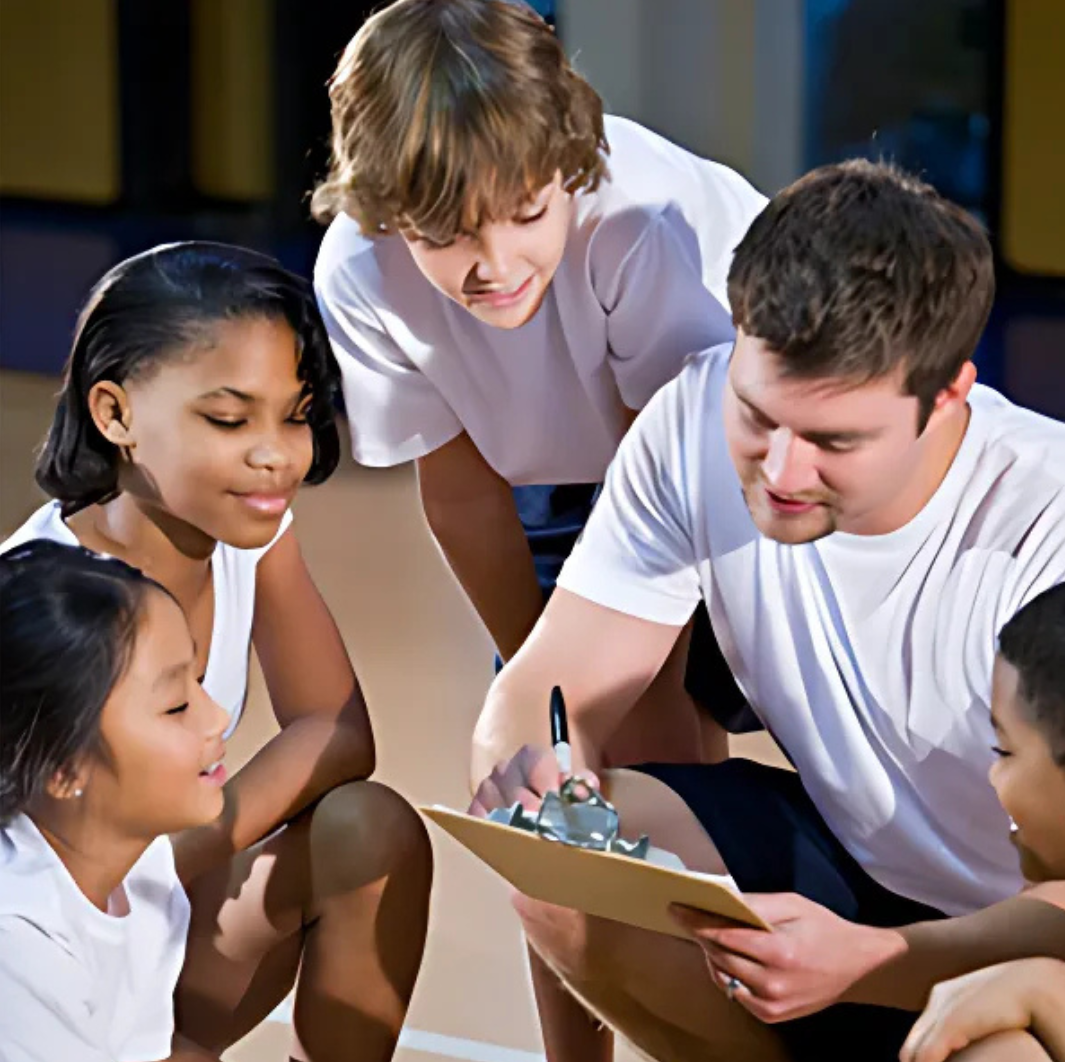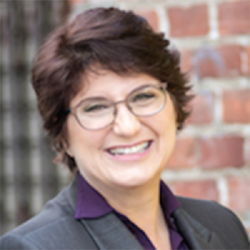 “Math, English, Science, and History departments,” the speaker announced. “Your PBL training will begin at 1:00 in the media center. P.E. will be collaborating down in the locker room.” It’s a common enough scenario, a segregation of subject areas that does a disservice to one of the most engaging classes in school, Physical Education.
“Math, English, Science, and History departments,” the speaker announced. “Your PBL training will begin at 1:00 in the media center. P.E. will be collaborating down in the locker room.” It’s a common enough scenario, a segregation of subject areas that does a disservice to one of the most engaging classes in school, Physical Education.
But I want to push back on this scenario in a big way because P.E. can easily bring Project Based Learning into our schools’ fitness labs, gyms, and onto our fields. After all, PBL is all about meaningful learning, and what is more meaningful to our students than how their own bodies operate and how their own health is maintained?
Core classes are always encouraged to blend writing and speaking, research and technology into their lessons and units, all of which are a vital part of PBL. Physical Education, however, can often be left in the professional development dust and, as a result, loses the opportunity to enhance their own subject area. Yet, both PBL and PE are grounded in hands-on learning, growth mindset, and collaborative grouping. So while P.E. may not appear to some to be the obvious place for rigorous PBL, it should be.
The Essential Project Design Elements listed in BIE’s Gold Standard PBL blend beautifully with what these kinesthetic-centric classes bring to a student’s daily life. Kids in every classroom long for more movement-based lessons, and research shows that more movement isn’t just about engagement; it can trigger greater neural growth. So we should leverage this enthusiasm for movement, for teamwork, and for meaningful learning, into an authentic Physical Education-focused PBL unit.
What Could a PBL Unit Look Like in P.E?
When we think about the parts of a PBL unit, many of them already apply to P.E. In other words, it’s merely about tweaking them so that they form a part of a curricular story, with students playing a role in their own learning.
So what I’ve done here is begin to break down some of the main components of a possible P.E. PBL unit, granting them more recognizable features of the BIE Gold Medal Standard, and creating a more focused curricular tale. Note: A P.E. teacher would need access to a computer lab or cart possibly once a week for the duration of the unit. After all, one of the differences between a “project” and “PBL” is the percentage of time the learning journey happens at school vs. at home.
Driving Question
How do we, as physical therapists, create an ad campaign to avoid sports injuries for an audience of high school students and young athletes? - Notice that the students are role-playing, not as students, but as professionals in a related career. This will help guide their research and give them a lens through which to learn.

Entry Event
Find a PSA that introduces the concept of sports injuries in school. You can also couple it with an infographic or a piece of text like this one from the American Medical Association.
Cross-Curricular Connections
Physical Education, Science, Research (Internet Literacy, Bibliography Creating, Citing Sources), Graphic Design, Writing, Oral Presentation, etc.
Research Strategies
Using EasyBib to help cite sources, Using a more visual search engine (Junior Google), Bringing an expert into the classroom (a physical therapist, a coach, someone from a publicity department, etc.) Note: Many times the English and History teachers are already teaching internet literacy strategies for research papers. Support the transference of those skills by holding students accountable to use those strategies produced for P.E. too.
Artifacts/Products/Assignments Throughout the Journey
How-to Screencasts, Annotated Images (see picture), Informative Essay, Infographic, PSA promoting the use of safety when playing sports. Note: Remember, you don’t have to teach the technology. There are plenty of students to do that. Group students with at least one tech-savvy kid in each group and much of this will resolve itself while you get to monitor for content-area accuracy.

Culminating Event
Small groups will have their choice to create a display at a local high school, YMCA, sporting goods shop, etc. For a week, the infographics, PSAs, and other artifacts will be on display for consumers to watch and learn from. Note: Embed choice any way that you can. Create a release form for students so that their work can be made public. Have a student who can’t sign off on that? Find a way to display their work on your own school site.
Authentic Audience
Students, Athletes, Customers. Note: An offshoot of PBL is Service Learning. In Service Learning, some of those authentic stakeholders also help to assess the students’ learning. Give audiences a rubric to use while walking around or viewing the artifacts and collect them to help guide in scoring or simply for student reflection.

Reflection Techniques
Students will produce a survey that can be taken by those viewing their display. Students can also create Twitter hashtags and encourage viewers to take snapshots of their displays to share online. This way, students can track how that hashtag is shared and how far its reach. Note: Inquiry is a huge part of PBL. Have students develop the questions that they want their audience to answer. This is an easy way to assess what a student knows about the topic and this increases interest to actually read the feedback given.
By not including every class in PBL professional development, we are limiting efforts to bring more rigor and engagement to all content areas. We are limiting ways to encourage skill transference, build school-wide community, and make school more meaningful and more connected to the realities of the world beyond. Remember, PBL can happen in any classroom, even one not limited by classroom walls.
Slideshow:
- https://docs.google.com/presentation/d/e/2PACX-1vQ3zm3luIBAEW_nLZKIUriGjqhL8ns4XebyfuWUWSSq9bnZQZjLqh256lnQH2uLZgV48gdJVB51aIMg/pub?start=false&loop=false&delayms=3000
- https://docs.google.com/drawings/d/1cjuIpnyK0C9ndzb0PDKUoxcPkTt5ta58ZpnE6Ohx8y0/edit?usp=sharing
- https://docs.google.com/drawings/d/1pi3uCwp4Z0Wk_jf8N7ftwIbIuhtUcMSDAj1ZCUPEmYg/edit?usp=sharing
- https://docs.google.com/document/d/1j6zj7VJHT8ITFaWckl27fA38QIB1Fy4JVtyqz2Qdm0Q/edit?usp=sharing

